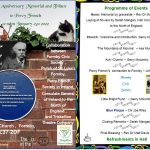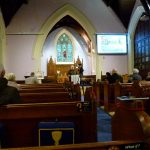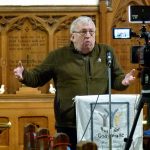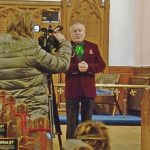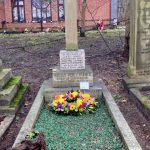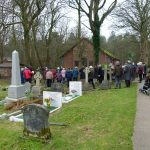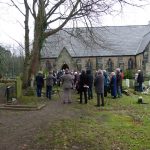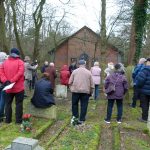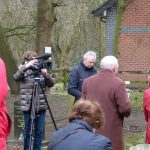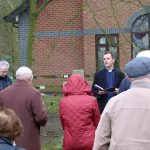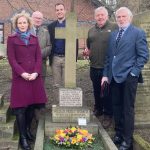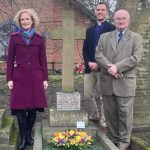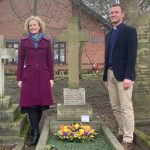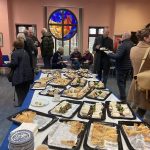Percy French
PERCY FRENCH AND HIS LINKS WITH FORMBY
‘One of Ireland’s greatest songwriters and entertainers’
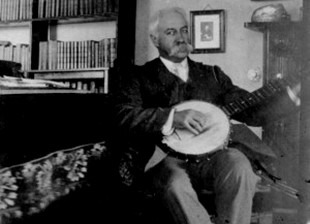
Over a century since the world lost Percy French, he still manages to inspire love, affection, inspiration and to encourage us all to see our world with a smile and understanding. However, to recognise him at the height of his popularity we need to go back further. Today his name is known to fewer people, the enduring fate of those who were entertainers and commentators on their own time on Earth; yet, be assured that his name endures. Indeed, being such richly talented person, we still possess the beauty of his watercolours even if Father Time has stolen the context of his personal presentations.
‘Willie’ Percy French was an Irishman by birth and breathing (though at the time the whole of Ireland was still a part of the United Kingdom); however, he was ‘loaned out’ to the rest of us all for our enjoyment and entertainment. Indeed, in our small community of Formby we feel that he is part of our own history too. After all, he is buried here and inspires visits from people from near and far each year to celebrate his life and remember his passing. In Percy French’s day, Formby numbered between 5 and 6 thousand people and had only grown to that amount after the railway line between Liverpool and Southport in 1848 had somehow beckoned it towards the wider world from its rural slumbers. Today, visitors to Formby are reminded that the churchyard of St. Luke’s contains his gravestone; in the summer you may catch a group nearby performing some of his songs; and since 2021 there is a Blue Plaque raised by Formby Civic Society and Formby Parish Council in order to commemorate where and when he died. It is almost as if he was ‘one of ours’, and he is treasured for that in our small corner.
What, then, is the link between the famous William Percy French, of the years before and after the turn of the 20th century, and Formby? How is it that he died here and not somewhere in his home country? Well, as always, there is a tale to tell – so let us start.
The link between Formby and French is family-related and involves in particular someone about whom we need to now learn more – his cousin, Johnny. William Percy French was born in Cloonyquin House (sadly demolished in 1964) in Co. Roscommon, the third of nine children. His father Christopher French had a sister called Mary Anne French who married John Richardson QC and moved to Dublin for her married life. However, she returned to Cloonyquin for the birth of her first child and always remained close to her family. Mary Anne is said to have been Percy’s favourite Aunt, and her son Johnny became a lifelong friend. This was John Brooke Richardson, later to be the Vicar of Holy Trinity Church in Formby and Honorary Canon of Liverpool Cathedral. Both boys went to Trinity College, Dublin.
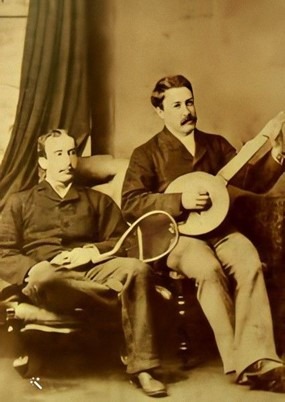
The famous entertainer and artist was known to family and friends as ‘Willie’ – the name ‘Percy’ was given as in many other families because his mother’s maiden name was ‘Percy’. He was married twice. The first marriage was to Ettie Moore in 1891 – tragically she died a year and day after their wedding, following the birth of their daughter who also died days later in 1891.This greatly affected Percy French who disappeared to the countryside and would not return to work for several months. In 1894 French married Helen Sheldon, who he had met while she was a singer in the chorus of one of his comic operas. He became well-known for his comic songs, sketches, caricatures and amusing stories. They had three daughters Ettie (named after his first wife), Mollie and Joan: at some point Helen, Ettie and Joan moved to a house in the picturesque village of Monk’s Eleigh in Suffolk where they lived together for the rest of their lives. Helen died in 1956 aged 88 whilst both Ettie and Joan lived until the mid-1990s, aged respectively 99 and 93.
By the end of the 19th century, he had begun to be known professionally as ‘Percy’ French. His career developed and he was persuaded to give London ‘a try’: he appeared in Music Halls and Theatres all over Britain, collaborating occasionally with classical musician Dr.Houston Collisson (1865-1920) including a tour the USA, Canada and the West Indies in 1910. Collisson composed the music for a number of French’s songs and arranged some ancient Irish melodies for one or two including the Mountain of Mourne.
There can be no doubt that during his travels he also visited his cousin Johnny and family in Formby so let us trace the story of ‘JBR’ in Formby.
JBR was ordained in 1881 and moved to Lancashire to pursue his career. Between 1881 and 1889 he was the Curate-in-Charge at St. John’s Church in Waterloo, and by 1892 had become the first Vicar of the newly-built Holy Trinity Church in Formby, living in a house he purchased out of his own pocket nearby in nearby College Avenue. The story ran that while he was working at St. John’s he took a train to Formby and, walking up Brows Lane from the Station, came across an official Village event. When he asked what it was, he was told that it was the laying of the foundation stone for the new Holy Trinity Church that was due to be built there. Little did he know that within two years he would be appointed the first Vicar of the Church and would remain in post until 1926.
His father having died in 1893, JBR’s mother joined him in Formby, living close to the village centre at Mueelrea House in Halsall Lane, just one house before it became Gores Lane and only four houses away from Fred Norburn’s Pie and Confectioner’s Store! She remained there until she passed away aged 97 in 1920, at the end of the same year in which Percy French died. That house must have been an equal focus for Percy’s visits to Formby, as its other occupants included another Aunt – Emily – as well as JBR’s brother Robert and sister Emily. They played a full role in the life of Holy Trinity. (There are many variations for the spelling of Mueelrea! However, my best guess is that it refers to the name of a Peak in County Mayo, from the Irish Cnoc Maol Réidh – ‘bald hill with the smooth top’ – and the name of the house can still be seen carved onto the gateposts).
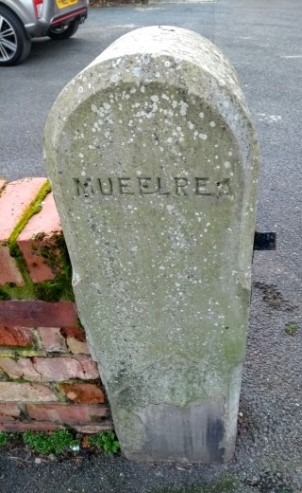
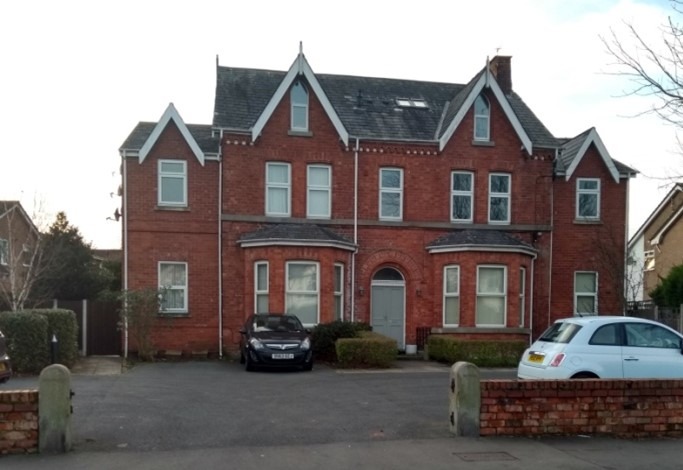
John Brooke Richardson made a great impact on the community and was very ’hands-on’ in working for his flock. For example, he had begun a very successful Bible Class for men with attendances of sixty-plus. This became the ‘Village Club’ with a selection of games including snooker available after the Class and open to all regardless of religion or class. By 1905 money was being raised to provide tennis court and a bowling green.
Of course, there were other demands for funding in the life of a newly-opened church, including the repayment of various debts. This is something an established Music Hall entertainer could help with and led to ‘Cousin Willie’ coming to Formby whenever his help was needed.
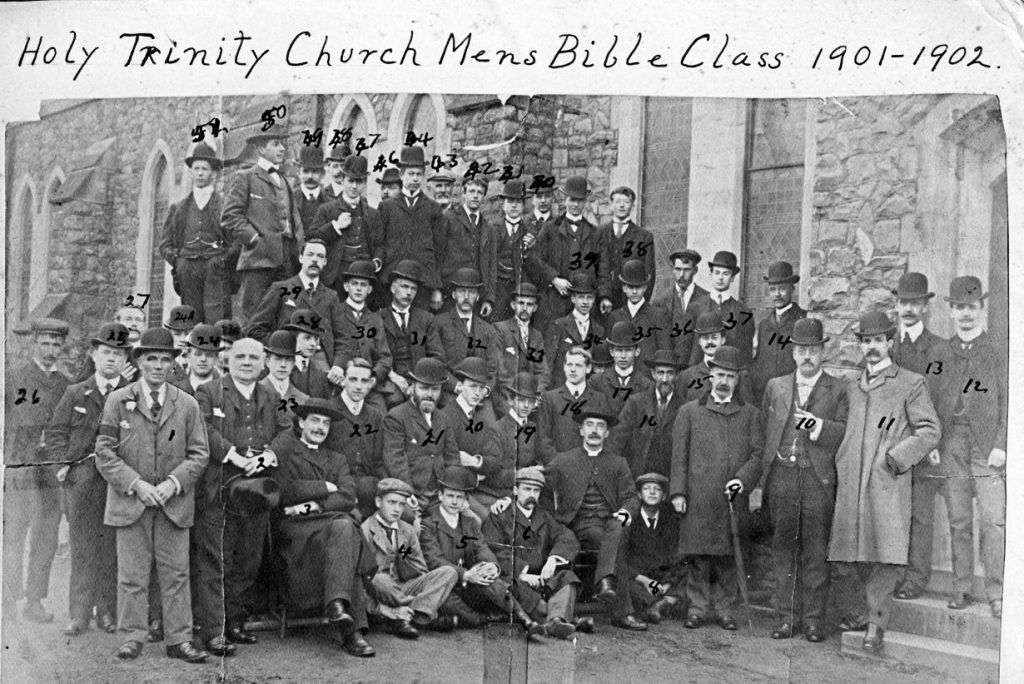
Number 7 is JBR, the Rector, and number 9 is his brother Robert. Number 12 on the right is William Marshallsay who wrote up the reports included in this account. Number 23 is Fred Beardwood, son of the Postmaster at the time and who like William Marshallsay was an early historian of Formby and member of the Formby Society. The photograph includes many others who played their part in the development and growth of Formby over many years.
Our first written evidence of a visit is through the Parish Magazines of Holy Trinity Church. We have descriptions of some of his early visits of support from a contemporary parishioner and historian, William Marshallsay, an early member of the Formby Society, and photographer Clayton Reynolds (who emigrated to Canada in 1913). For example, in Spring 1898 Marshallsay wrote that “much anticipatory satisfaction was felt when it became known that the Vicar’s cousin, Percy French, the renowned playwright poet, artist, musician and entertainer was coming to help at the forthcoming Village Fair. This was an attraction indeed for Mr. French had recently been honoured by inclusion in a Command Performance at Sandringham. Best known of his songs are “The Mountains of Mourne”, “Phil, the Fluter’s Ball “and of his poems”.
Another example was of the 3rd Village Fair in 1898. “This entertaining four day effort to wipe off the Church Building Debt of £1,200 was duly held at the end of June on the Poverty Field near Freshfield Station. Much preliminary organisation had been done, and the provision and erection of Marquees, Tents, Boundary Canvas etc. was a formidable task. There were seven stalls in the big marquee; a Refreshment marquee, a Café Chantant tent, a Rifle Shooting gallery; and various sideshows etc. Mr. Percy French’s sessions in the Café Chantant were very popular and keenly enjoyed. He made lightning sketches with coloured crayons to illustrate his accompanying witty tales and talks; sometimes when these sketches were turned upside down an entirely different picture was revealed. He held china plates or saucers over a lit candle until the surface was smoky black, then with matchsticks for brushes, etched beautiful pictures in black and white. He would burst into songs or monologues accompanying himself on his banjo.
Of his own verses and parodies he had an apparently inexhaustible store: his watercolour paintings of Irish bogs, lakes, coast scenery and skies together with his delightful pictures of corners of the rose garden. There were many other visits here [to Formby]”. In December 1898 there was the ‘Christmas Tree Sale of Work’: “There having been a surplus of articles left unsold at the Summer Village Fair it was decided to have smaller Sale in the Parish Room in the month of December. Gentlemen were permitted to smoke during the music and drama provided they bought their tobacco at the Christmas Tree Stall.
Mr. Percy French came again and delighted his audiences with his artistic skill, songs and wit. There was an excellent financial result – £120 cleared leaving only about £50 left owing on the Building Debt.“
In January 1899 he returned, this time to support St. Luke’s Day School – in 1920 he was buried in the churchyard of St. Luke’s. William Marshallsay wrote, “A special effort was organised in aid of St. Luke’s Day School, where, pending the opening of our own school, a proportion of Holy Trinity’s children were receiving education. This was another attractive entertainment by the Vicar’s renowned cousin, Mr. Percy French. A full audience packed the Parish Room and greatly enjoyed Mr. French’s freely given items of sketching, reciting, singing and humorous stories”.
In June 1901 he supported the Fourth Village fair. “Following much preparatory work this important four day effort towards liquidation of School building debt was held on Poverty Field alongside Freshfield Station. The Grand Marquee contained eight stalls and in the spacious grounds were the Refreshment Tent, the Café Chantant, the Variety Tent, the Shooting Gallery and Rifle Range; the various Side Shows, Swings etc. Outdoor music was shared by the Formby Prize Band, Leadbetter’s Band and the Lancashire Artillery Band.
Operations hummed briskly throughout the four days. The stalls in the main marquee did gratifying business. Mrs. Earle and her helpers catered admirably in the Refreshment Tent.
The clever and genial Mr. Percy French was in great form in the Variety Tent; and Mrs. Ainsworth triumphed in the Café Chantant with the distinguished help of Mr. Paul Rubens the famous light opera composer and some of his artiste friends.” This suggests that occasional he brought friends from the Theatre to support his fundraising efforts. For example, Paul Rubens(1876-1910)was a librettist and composer who produced a good number of works that appeared on the London stage, particularly in the Edwardian years. The ‘Mrs. Ainsworth’ mentioned was probably Mrs. Annie Ainsworth who lived in ‘Elleray’ on Victoria Road.
These examples of help given by Percy French to the Formby community cover only the years 1898 and 1901. There were many others over the ensuing years, probably until the start of WWI, with support given across the community.
Friendship and Family in Formby
If we look back at the timeline of Percy French’s involvement with Formby, something becomes clear.
He had an involvement with the village through friendship and family – Johnny and Johnny’s family. These years incorporated Percy’s move to London and his ever-developing career in theatres and music halls, and John’s appointment to Holy Trinity Church. They probably slowed down with the outbreak of WWI, when the world simply changed. His opportunities for work diminished and he spent more time touring the small towns and villages of Ireland. However, the health of both of the boys was slowly declining. The heyday was done.
Also, if we cross-refer the nature of Percy French as a man to the times he spent in Formby he is unlikely to have been far away from the company of people – not just his family but also the people of all walks of life he would have encountered in the village, in the church, the streets and possibly the hostelries. In modern parlance he was a ‘people person’ – and very much a man of the people. Formby would gradually have got to know him. He was no stranger during those final years of the 19th century and the first fifteen or so years of the Twentieth. Perhaps if he was not to find his final resting place in Ireland, where even over a century after his death he is remembered and loved for all manner of his work both with a pen or a paintbrush, then Formby is a fitting spot for him to lie. He has always been welcomed there.
For Percy French, 1916 onwards was a time in the decline of his health and a period when he suffered some unfortunate accidents. One, when he tried to board a moving train but was pulled along the platform, was something it is said from which he never fully recovered.
Percy French fell ill in January 1920 whilst in Glasgow on a tour of the UK, and went directly to Johnny’s home in Formby. It was in JBR’s house by the Liverpool-Southport railway line that French spent his last days from the 16th to the 24th of January finally succumbing to pneumonia. The house was called variously ‘Greenlea’ or ‘Green Lea’ (even the 1911 Census shows both spellings of the name!), and if you visit it to view the Blue Plaque erected in 2021you should look directly over the wall and you will see the bedroom in which he was staying.
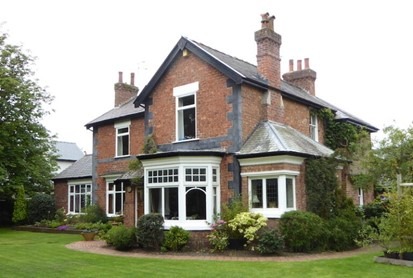
Canon Richardson’s church had no burial grounds and burials were held either at St. Luke’s Church or St. Peter’s Church. Johnny’s house fell in the parish of St. Luke’s and so that is where Percy French was buried. When his aunt Mary Ann Richardson passed away only eleven months later, she was laid to rest at in St. Peter’s Churchyard as Mueelrea was nearer there.
There was a fulsome tribute paid in the pages of the Formby Times: “His loss will be keenly felt by all to whom his entertainments offered unalloyed pleasure throughout the United Kingdom. Mr. French frequently appeared at Formby entertainments prior to the war, including the famous Village Fairs … Many houses in Formby are adorned by his sketches.” The newspaper added that, “he had a fund of quiet humour which found an appropriate outlet in the sketches and songs … and some of them such as the ‘Mountains of Mourne’ are likely to be popular for many years to come. The vocal portion of his entertainment was inevitably taken by Mr. French himself and while he sang he played banjo as an accompaniment (supported often by a single pianist) … he could hold for two hours the individual attention of his patrons.”
The man who had produced the music for some of the songs that Percy French sang was, as mentioned earlier, William Alexander Houston Collisson. Born in Dublin in 1865 he was an ordained clergyman and musician. He had organised popular concerts in London, Dublin, and Belfast though his main claim to fame was his association with Percy French. Together they collaborated on a light opera, ‘The Knight of the Road’ and many well-loved songs including ‘The Mountains of Mourne’. Houston Collisson served in several parishes in England including Truro, continuing from time to time his tours with French. He was unmarried, and died 1 February 1920 at St. Deiniol’s Library in the Gladstone Family-dominated village of Hawarden, North Wales, where he had been giving a charity recital. Only one week before, on January 24th, had been the funeral for Percy French in Formby and Rev.Collisson had conducted the service.
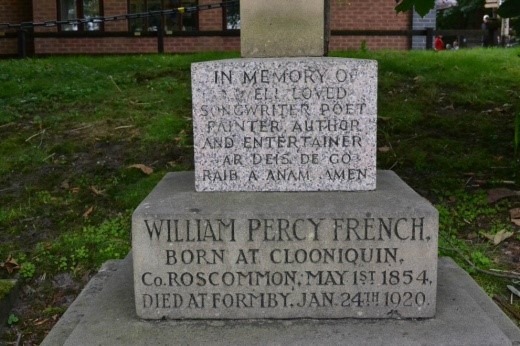
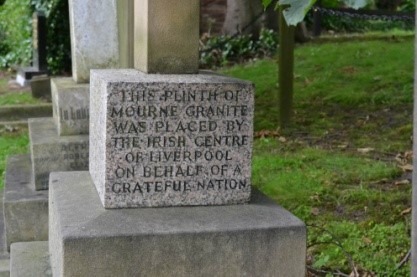
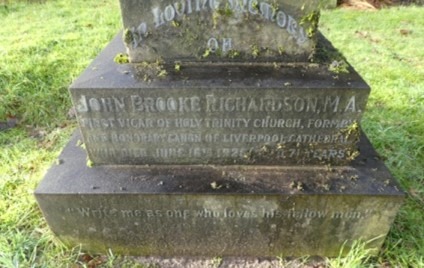
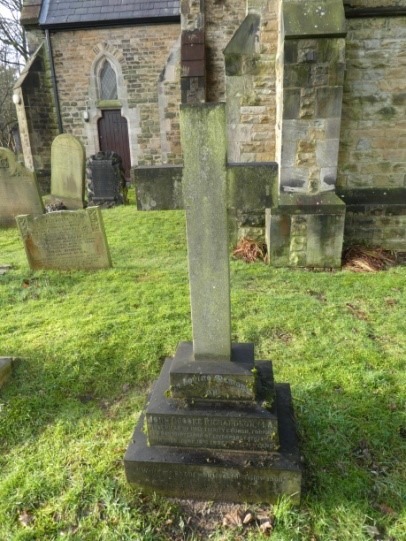
In 1928, Johnny Richardson himself passed away aged 71 after suffering failing health for a number of years. There was a very large complement of grateful Formby people at his funeral to pay their respects to a man they had respected and loved.
Less than two months before he had died, Percy French had written the following lines to his cousin and friend:
Give me a garden in the sun,
A cushioned chair of wicker
And one companion – only one –
I choose the little vicar
JBR too was buried in the same churchyard of St. Luke’s, just four plots to the right of the front gate, still close after two lifetimes
Two cousins. Two friends. Through life.
John Phillips
Formby Civic Society
24 January 2022
His works were collected and edited by his sister Mrs. De Burgh Daly, as ‘Prose, Poems and Parodies’ (1925).
They were also collected as James N. Healy, ed., ‘Percy French and His Songs’ (1966).
Brendan O’Dowda’s book ‘The World of Percy French’ includes words and music for over a hundred well – loved songs and poems.
The plaque to Percy French was raised on 9th November 2021. The funding for this Plaque came through Formby Parish Council with the Civic Society providing the cost of having it fixed to the wall at the property
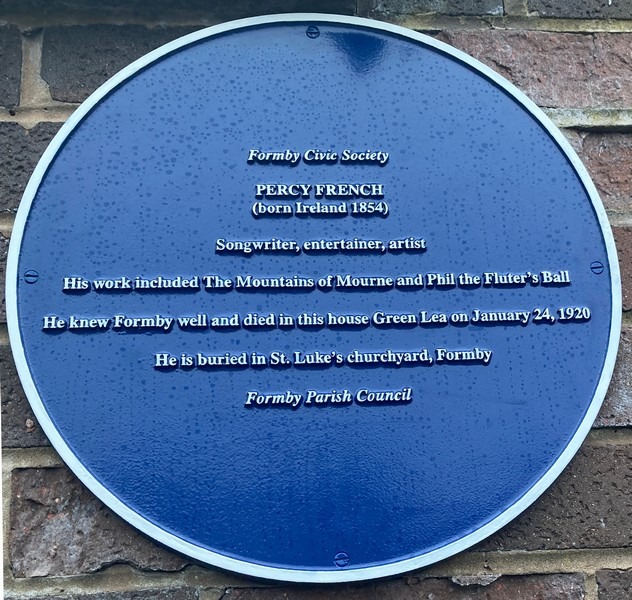
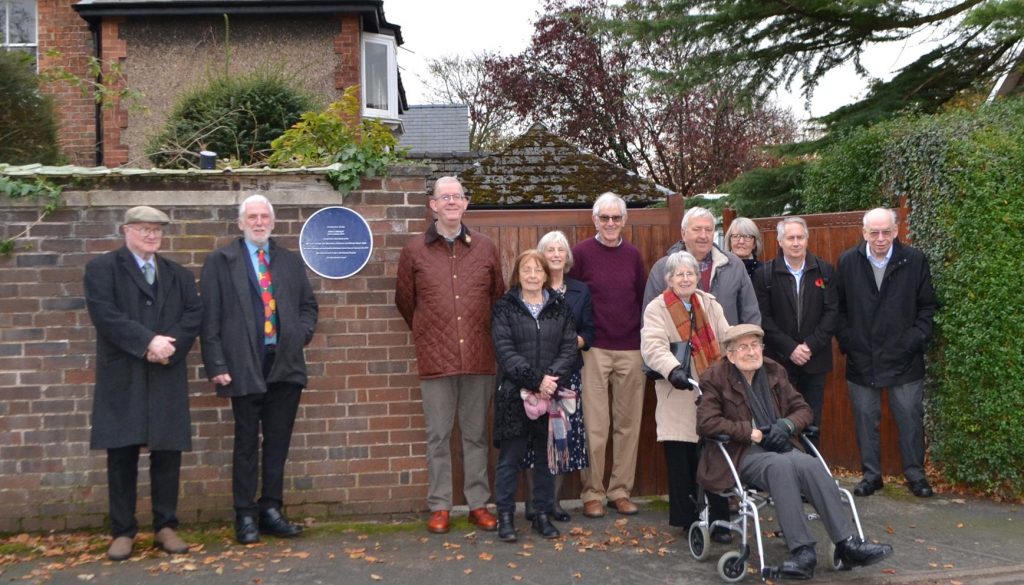
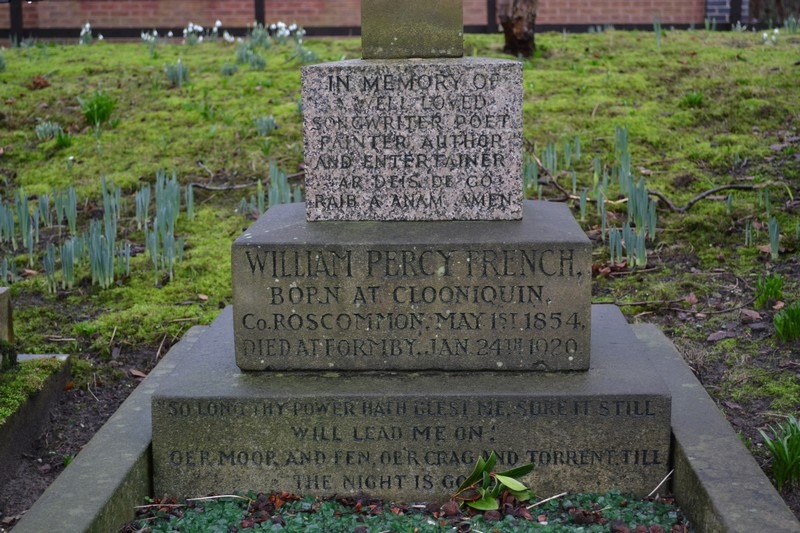
A Memorial was held at the graveside of Percy French in St. Luke’s Churchyard Monday 24th January 2022 at 12 Noon
The centenary of Percy French’s death was the 24th January 2020 but the expected opportunity for an Anniversary Memorial with an associated short concert of him was postponed because of the pandemic. Two years on and possibly spurred on by the raising of the Blue Plaque, members of the Percy French Society in Ireland have asked the Vicar of St. Luke’s, the Reverend Dr. Matt Davis, plus the Formby Civic Society, Formby Parish Council and the Irish Consulate to work together to plan proceedings
Refreshments were provided, courtesy of the Consulate
To view video highlights please click here
To view pdf of the 102nd Anniversary Memorial and Tribute to Percy French booklet prepared by Gerry Molumby please click here
Please click on any image for an enlarged view
We work with people of all ages across the community and are always open to fresh ideas and imaginative projects in order to preserve our culture and our heritage whilst also recording it both digitally and in print forms for the benefit of our community members in the future. We continue to seek ways of making local people more aware of the information we hold and ways of developing our bank of information in text to add to and support these images.

